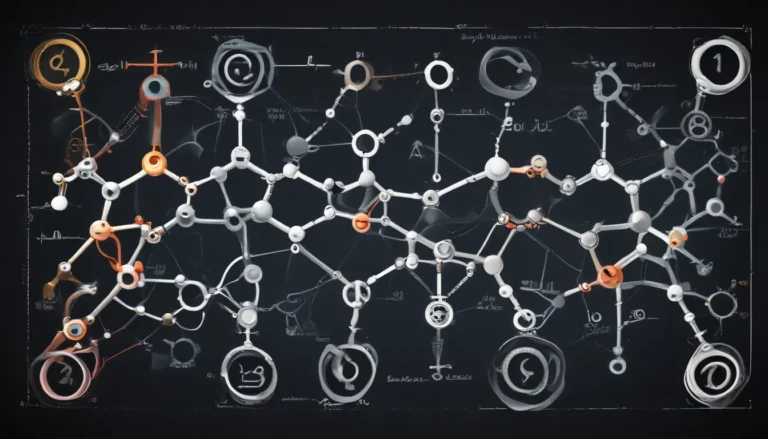A Note About Images: The images used in our articles are for illustration purposes only and may not exactly match the content. They are meant to engage readers, but the text should be relied upon for accurate information.
Welcome to the fascinating world of the conduction band! In the realm of chemistry and materials science, the conduction band stands as a crucial concept that influences the behavior of electrons in solid-state materials. From its definition and characteristics to its role in semiconductor materials and energy transfer, the conduction band is a topic that both educates and captivates scientists and enthusiasts alike.
Unraveling the Mysteries of the Conduction Band
Let’s embark on a journey to uncover 14 surprising facts about the conduction band that will deepen your understanding of this fundamental element in the field of chemistry. Prepare to be amazed as we explore the intricacies of the conduction band and how it shapes the world of materials science and technology.
The Core of Solid-State Physics
At the heart of solid-state physics lies the conduction band, a range of energy levels in solid materials where electrons can move freely to conduct electric current. This concept is essential for grasping the electrical properties of various materials and lays the foundation for advancements in electronics and materials science.
Above the Valence Band
In the hierarchy of energy levels within a solid material, the valence band is occupied by valence electrons, while the conduction band sits above it, allowing electrons to move freely and conduct electricity. This separation of energy levels is key to understanding the behavior of electrons within a material.
Diversity in Non-Conductive Materials
Non-conductive materials, also known as insulators, present a unique challenge with a large energy gap between the valence and conduction bands. This gap makes it difficult for electrons to transition and conduct electricity within these materials, showcasing the diverse range of characteristics within the conduction band.
Metals and Their Conduction Band
Metals stand out for their partially filled conduction bands, enabling electrons to move effortlessly and conduct electric current with efficiency. This property makes metals valuable in various industrial applications where conductivity is paramount.
Energy Gap and Conductivity
The width of the energy gap between the valence and conduction bands determines the electrical conductivity of a material. Semiconductors, with a small energy gap, exhibit intermediate levels of conductivity, making them suitable for a wide range of electronic devices.
Tailoring Properties with Doping
Doping, the intentional addition of impurities to a material, can modify the properties of the conduction band by shifting energy levels and enhancing conductivity. This process is fundamental in creating materials with specific electrical characteristics.
Role in Electronic Devices
Electronic devices such as transistors and diodes rely on the movement of electrons within the conduction band to enable circuit functionality. Understanding the behavior of the conduction band is crucial for developing efficient and reliable electronic components.
Temperature’s Influence
Temperature plays a significant role in the conduction band’s behavior, impacting the thermal energy of electrons and subsequently affecting conductivity. As temperature rises, the movement of electrons within the conduction band increases, leading to enhanced electrical properties.
Exploring Anisotropic Behavior
Anisotropic behavior in the conduction band highlights the unique conductivity patterns that can vary based on the direction of electron motion within a material. This phenomenon adds a layer of complexity to the study of the conduction band and its implications in materials science.
Bridging Theory and Practice with Band Theory
Band theory serves as a foundational concept in solid-state physics, explaining the behavior of electrons within a material, including their occupation of the conduction band. This theory forms the basis for understanding various electronic and optical properties of materials.
Superconductivity and the Conduction Band
The study of superconductivity, characterized by zero electrical resistance at low temperatures, delves into the behavior of electrons within the conduction band. This phenomenon showcases the unique properties of certain materials and their potential for groundbreaking technological advancements.
Facilitating Charge Carrier Movement
The conduction band serves as a pathway for charge carriers, such as electrons or holes, to move within a material and contribute to electric current flow. This movement of charge carriers plays a vital role in enabling the conductivity of various substances.
External Influences on Band Structure
External forces, including electric and magnetic fields, can alter the energy levels within the conduction band, ultimately impacting the material’s conductivity. Understanding these influences is essential for controlling and optimizing the electrical properties of materials.
Driving Innovation in Materials Science
Researchers study the conduction band extensively to uncover new materials and technologies that leverage its properties. From improved semiconductors to more efficient electronic devices, the exploration of the conduction band fuels innovation in materials science and engineering.
Unveiling New Horizons with the Conduction Band
In conclusion, the conduction band embodies a captivating realm within the field of chemistry, offering insights into the behavior of materials and the conduction of electricity. By shedding light on its significance and delving into 14 surprising facts, we have broadened our understanding of this critical concept that impacts a wide range of applications.
The conduction band’s role in determining material conductivity, influence on optical and electrical properties, and implications for technological advancements highlight its importance in advancing scientific knowledge and technological innovation. Through continued exploration and research, we can unlock new possibilities in materials science and shape a future driven by the dynamic properties of the conduction band.
Embracing Knowledge and Authenticity
At the core of our commitment to providing engaging content lies a dedication to authenticity and accuracy. Each fact shared on our platform is contributed by real users, ensuring a diverse range of insights and information. Our meticulous review process guarantees the credibility and reliability of the facts we present, fostering a community built on trust and knowledge.
FAQs: Your Guide to the Conduction Band
-
What is the conduction band?
The conduction band is the energy level in a material where electrons are free to move and conduct electricity. -
How is the conduction band formed?
The conduction band forms when valence electrons gain enough energy to break free from their parent atoms and move freely within the material. -
What is the difference between the conduction band and the valence band?
The valence band contains electrons tightly bound to their parent atoms, while the conduction band allows electrons to move freely and conduct electricity. -
How does temperature affect the conduction band?
Temperature influences the energy of electrons, enabling more electrons to transition to the conduction band and enhance electrical conductivity. -
What are some materials with a wide conduction band?
Semiconductors like silicon and germanium have relatively wide conduction bands, allowing for efficient electrical conduction compared to insulators but not as robust as metals.
Dive into the world of the conduction band and explore the boundless opportunities for discovery and innovation it offers. Join us in our quest for knowledge and embrace the wonders of chemistry and materials science through the lens of the conduction band. Stay curious, stay inspired, and let the journey of exploration lead you to new frontiers of scientific understanding.






